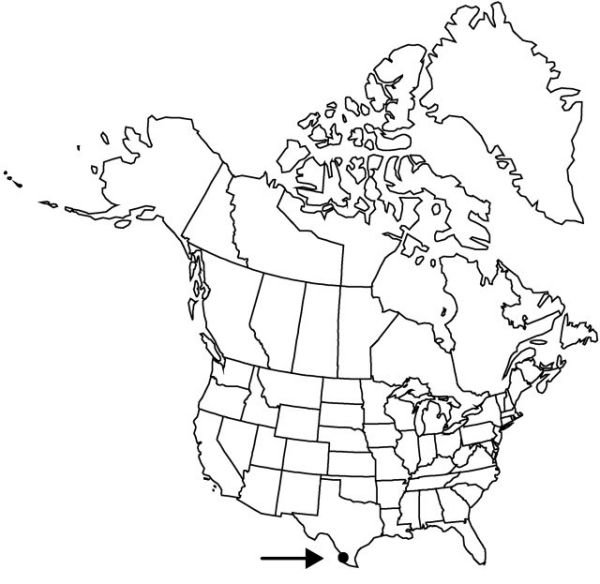Agave univittata
Philos. Mag. Ann. Chem. 10: 415. 1831.
Plants acaulescent, usually suckering; rosettes densely cespitose, 3–6 × 5–10 dm. Leaves mostly erect, 30–40(–70) × 3–4.5(–5) cm; blade light green to yellowish green, without bud-prints, linear-lanceolate, stiff, adaxially plane to concave toward apex, abaxially convex toward base; margins undulate to crenate, nonfiliferous, not easily detached, conspicuously armed, teeth single or occasionally double, 4–6(–8) mm, 1–2 cm apart; apical spine reddish to grayish, subulate, 1–1.5(–2) cm. Scape 3–4.5(–5) m. Inflorescences spicate, densely flowered on distal 1/2; bracts caducous, acicular, 3–5 cm; peduncle 4 cm or shorter. Flowers 1 on short pedicel, or 2–7 per cluster, erect, 3.5–4(–4.5) cm; perianth greenish white to yellowish green, tube campanulate, 2–4 × 8–10 mm, limb lobes erect to slightly spreading, subequal, 14–20 mm; stamens long-exserted; filaments inserted on rim of perianth tube, spreading, greenish or lavender, 3–4.5 cm; anthers pale yellow, 15–20 mm; ovary 1.8–2.2 cm, neck constricted 5–7 mm. Capsules sessile or short-pedicellate, oblong and 1.8–2.5 cm or globose and 1.5–2 cm, apex beaked. Seeds 5–6 mm. 2n = 60.
Phenology: Flowering spring.
Habitat: Sandy flats
Elevation: 0–100 m
Distribution

Tex., Mexico.
Discussion
The name Agave lophantha was mentioned by C. J. W. Schiede (Linnaea 4: 582. 1829) without a description. C. S. Kunth (Enum. Pl. 5: 838. 1850) validated the name, but not before A. univittata was proposed. Neither name is typified nor is any authentic material known. H. S. Gentry (1982) incorrectly retained A. lophantha and it is now widely used. A. J. Breitung (1959) was the first to adopt A. univittata, and that name is taken up here.
Selected References
None.